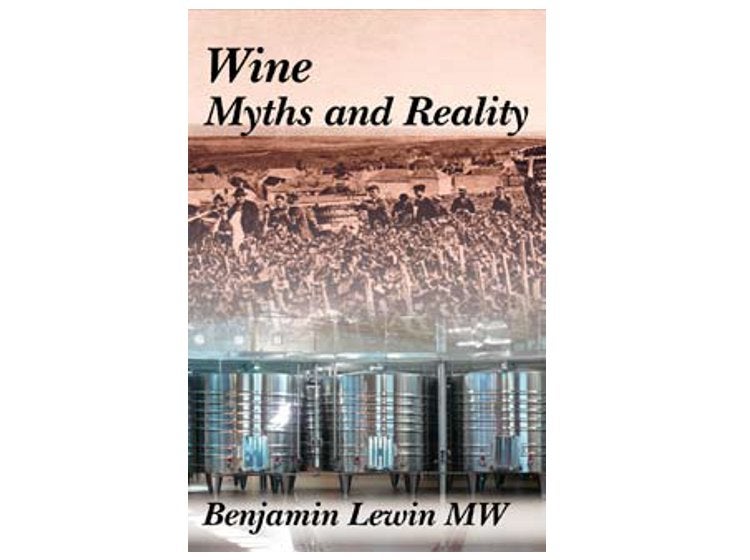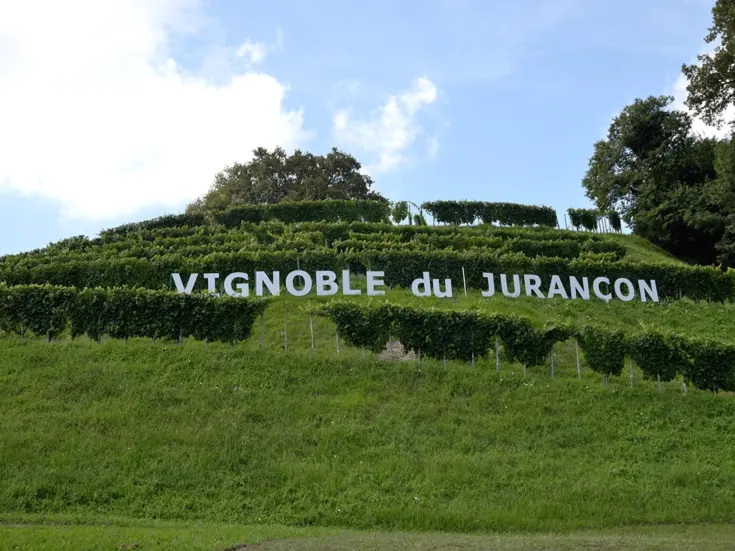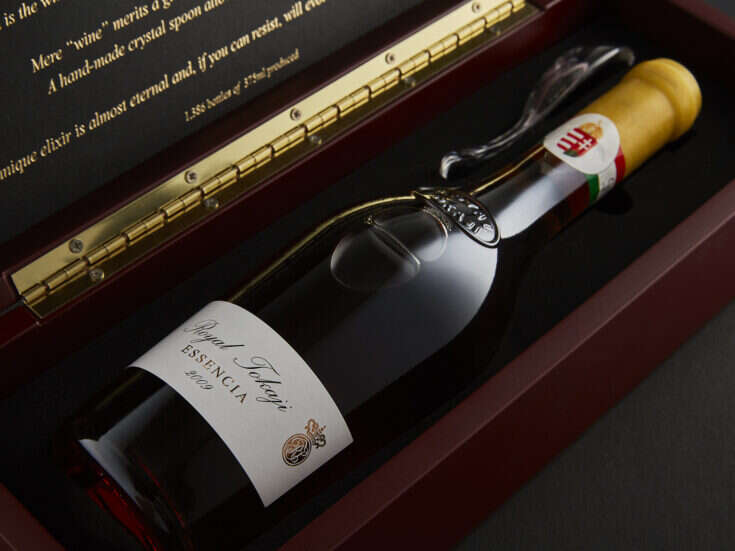
Benjamin Lewin MW
Wine: Myths and Reality
Published by Vendange Press $29 / £19.95
Reviewed by Andrew Jefford
Gutenberg’s work in 14th-century Mainz made books for all possible; the computer age means that books by all are now a reality. Self-publication will, I’m sure, bring us some masterpieces – but the system has inherent flaws. One of the most prominent is that self-published books are also self-commissioned and may well be self-edited, too. Like Montesquieu’s tripartite division of political powers into an executive, a legislature, and a judiciary, these functions are best kept separate.
This is Benjamin Lewin’s second book for his own Vendange Press, and a third is on its way. This one has 636 pages and weighs 4.5lb (2kg); it is a cleanly designed signaturebound hardback, most of whose onecolumn pages contain a photograph, chart, or graphic. There are thorough footnotes and an index, and it has a bibliography, but there are no acknowledgments of any sort to anyone else. It’s an impressive feat of selfpublishing, implying considerable financial and temporal outlay.
Panoramic ambition
What’s it about? Well, everything really: history, varieties, winemaking, the international market, regions, and styles. The cover blurb (presumably self-penned) claims the book “explodes the world of wine”; the title suggests a myth-busting approach; the back jacket stresses the author’s scientific credentials, as well as “his position as one of only 300 Masters of Wine.” The book, the blurb claims, is “panoramic in its scope, magisterial in its treatment, and meticulous in its research.”
These lofty claims are only intermittently justified in what is a sprawling and overambitious book. A period of 30 or 40 years spent traveling, reading, tasting, and thinking about wine might bring the appropriate levels of expertise to cover everything that Lewin wishes to cover in a genuinely magisterial manner; this, though, is more of a canter around the panorama, and the coverage often lacks insight.
The myth of the myth
Lewin’s struggle to find “myths” in a world as exhaustively researched and written about as wine is rather wearisome, requiring the copious reroasting of old chestnuts (chaptalization, diethylene glycol, elderberries) or else perversely anachronistic readings of what is meant, for example, by terms like terroir (by limiting it to soil alone – something that no serious writer on the subject would ever do today). A number of the charts and graphic materials are superficial, evidently inserted to break up the text; the book’s hideous cover would never pass professional muster; and the photographs are best described as editorial. Lewin is a clear but plain writer, so this is a long read with little literary merit; the overall tone is clever but chiseling and joyless, without moments of evident enthusiasm for anything much.
A good editor would have excised clichés such as “the jury is out,” “don’t hold your breath,” and those “babies” that are inevitably “thrown out with the bathwater” and would never have passed a sentence such as “Like people, you can never tell how the progeny will turn out.” Lewin can often be patronizing, too – “Will they ever learn?” he asks witheringly of the Italians on p.449 – and his prescriptive certainties are sometimes misguided. “There’s not much of interest to be said about white wines from the southern half of Italy,” he pronounces damningly on p.445. Alas for producers of the best Greco di Tufo and Fiano di Avellino: uninteresting, all.
Hard words
Let me provide a few more examples to justify these hard words. Australian Chardonnays “[i]n the oaked style,” we learn on p.167, “are big, oaky, buttery, and alcoholic,” while unoaked Chardonnay from Australia is “distinguished from the Old World by the intensity of its bright, forward lemon fruits, absence of minerality, and higher alcohol” — all generalizations that haven’t been true for a decade. Coonawarra’s limestone is described as “unusually permeable.” In fact, it is a duricrust called calcrete and often requires ripping before the roots can penetrate it. I’d love to see “the mountains to the east” of Coonawarra, which Lewin has apparently spotted. Margaret River is described as a “cool-climate” region on p.309. Its median growing degree day total of 1,887 makes it a tad warmer than the Napa Valley (whose equivalent figure is 1,883).
All that is said about Corton- Charlemagne in the book is that it “can be fat and opulent” – strange adjectives indeed for wine from this cool, west-facing site with its extensive morning shade. It’s not clear to me why the low wall around the Kirchenstück vineyard “has a profound effect on the microclimate within the vineyard”, while four pages later we are assured that the wall around Clos Vougeot “has little practical effect.”
“Wine has been produced in Iberia since ancient times” will set few pulses racing as an opening sentence; and the section devoted to Portugal (insultingly entitled “Rescuing a Derelict Industry”) is a dismally superficial and inadequate account of this exceptionally complex wine culture. “Like a drug addict, Bordeaux is now completely dependent on selling en primeur,” Lewin writes on p.347. A strange analogy, in that this particular drug appears to have delivered only radiant good health to its users.
Lewin unquestioningly swallows the outdated Hugel/Trimbach/Beyer line on Alsace’s grands crus, despite all the evidence that the system continues to invigorate its region. France’s regulatory apparatus is, as usual, “stultifying”, an Anglo-Saxon commonplace little shared by those subjected to all those apparently onerous regulations; indeed, in one astonishingly silly rant Lewin declares that “there’s about as much Liberté, Egalité, Fraternité on the internet in France as in Tiananmen Square in China” -something I can disprove in seconds if Dr Lewin cares to visit me at home near Montpellier. The theory that indigenous yeasts “constitute part of the characteristics of a natural wine” is, we learn, “one of the myths of winemaking”; I hope, in that case, Dr Lewin saw Jamie Goode’s reporting of Dr Mat Goddard’s University of Auckland research on this subject, which suggested that the myth might have something to it after all. We hear all the usual arguments about corks and about garage wines. There are also snide remarks about “market forces” upping yields in Champagne on – but market forces in unregulated New World vineyards are a different matter.
Organic food is “a farce”, and biodynamics is “simply beyond all reason”. The idea that “wine is a living thing” is given short shrift on pp.101-2, suggesting an authorial unease with metaphor – though metaphor has been considered, from Aristotle onward, to be the first of the writerly virtues.
Incisive passages
There are, to be fair, some sound and incisive passages, too – such as those dealing with grapevine genetics, clones, rootstocks, and genetic engineering – areas of evident expertise. I enjoyed Lewin’s exposé of the sweet California color concentrate Mega Purple and had no idea that almost half of all California wines have had a degree of alcohol artificially extracted from them. I also applaud the fact that he ends the book with an all-too-brief chapter on the biggest scandal of all in the wine world, which is the lenient shambles of wine-ingredient labeling by comparison with food labeling and the fact that most wine consumers have no idea how many additives find their way into wine.
Overall, though, I felt that this intelligent and intellectually nimble author would have better invested his time and money commissioning from himself a work of narrower but deeper scope in a field where his treatment could genuinely be magisterial.







